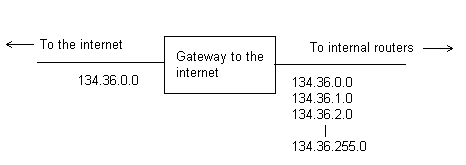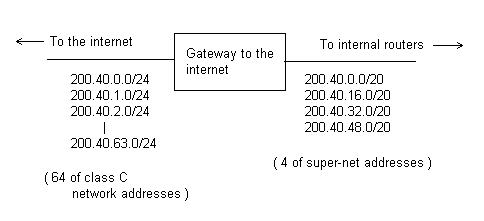Supernets, subnets and routers
Introduction
The previous web pages on supernetting and subnetting have described some techniques which enable organisations to divide up large networks into smaller networks, and also to combine together small networks into fewer large ones.
It is worth considering the effect of sub-nets and super-nets on routing tables.
Sub-nets
Start with an organisationn that has been allocated a network adress such as 134.36.0.0/16
This is of course a class B address, but this is not particularily significant.
Outside the organisation, as far as the internet is concerned, there is only one network address to worry about, so the internet routers only require one entry in the routing tables.
However if the organisation then internally divides up this network into 256 smaller networks, then there has to be 256 entries in the routing tables for the organisation`s internal routers. Which is quite an overhead.

Super-nets
Start with an organisation that has been allocated a contiguous block of class C addresses - say 64 of them.
The organisation combines them all into four larger networks - now the opposite situation exists.
Because the organisation was allocated 64 class C addresses, the internet routers must be aware of all 64 different network addresses, so all 64 must be included in the internet router tables.
However the routers inside the organisation only have to be aware of the addresses of the 4 supernets.

Aggregation
This process of combining up contiguous network addresses to form a single address for the resultant larger network is known as aggregation, and can be used internally by large organisations in order to simplify the internal router tables.
© 2001 Ron Turner
Return to the IP protocol home page